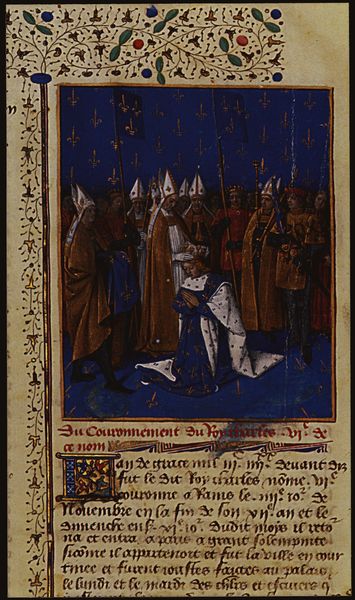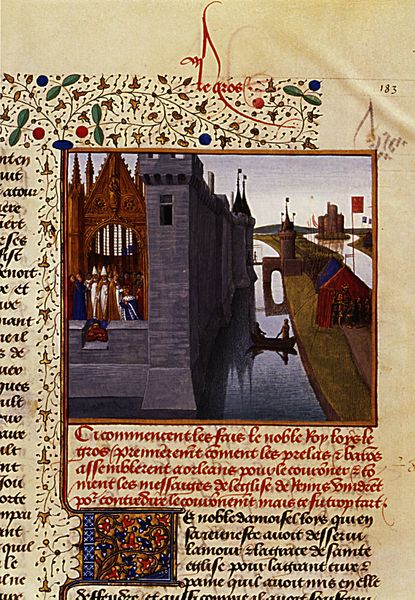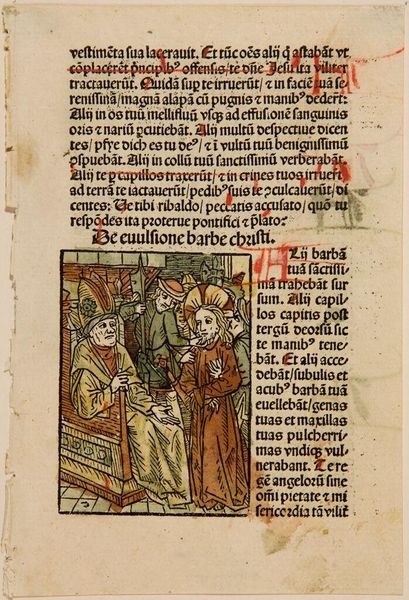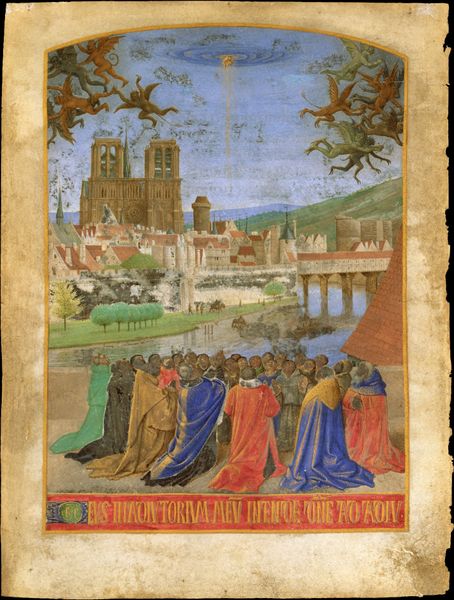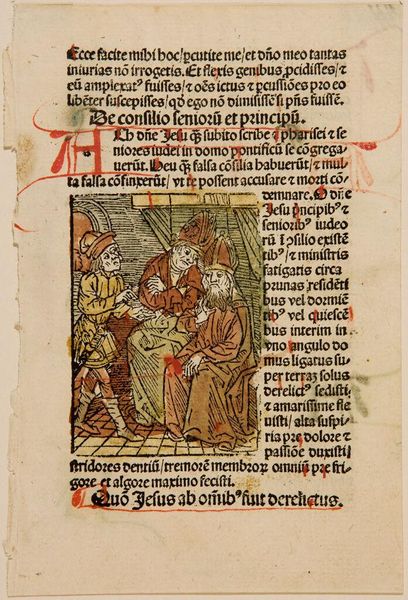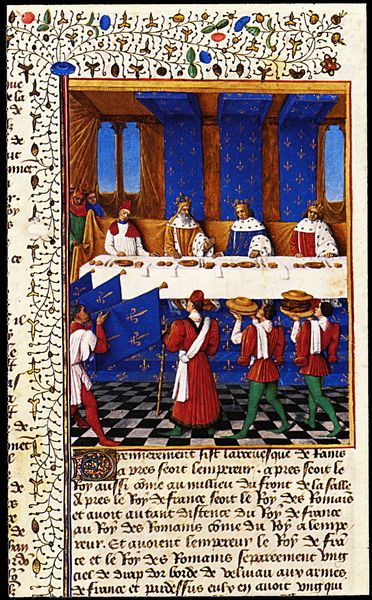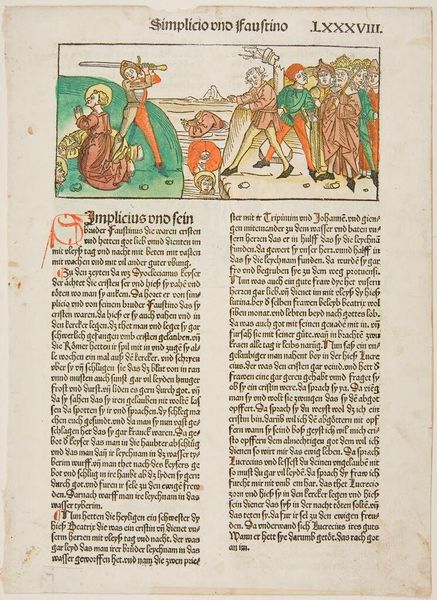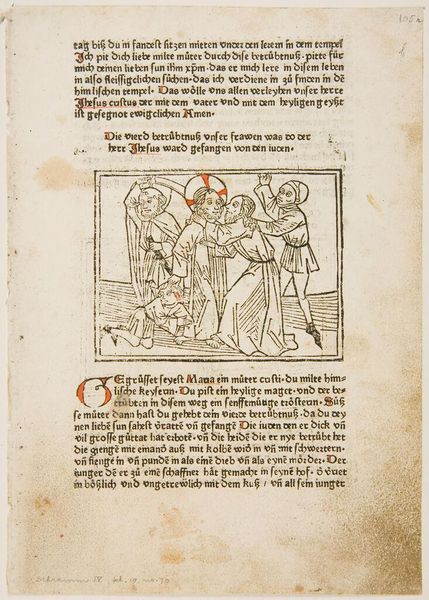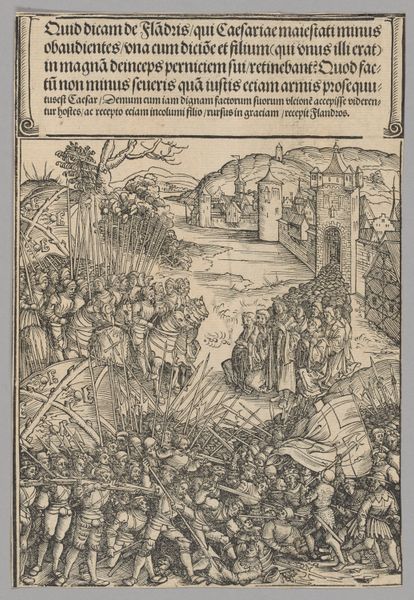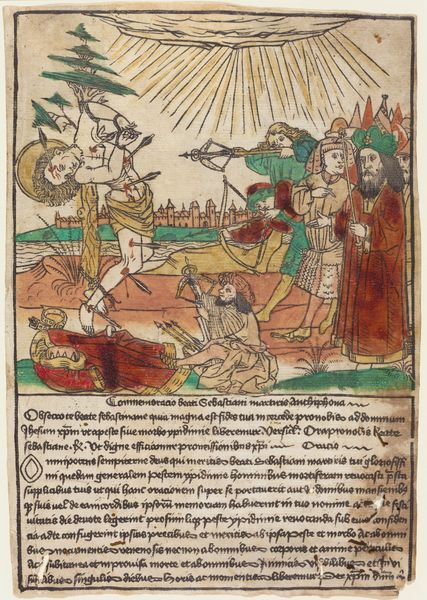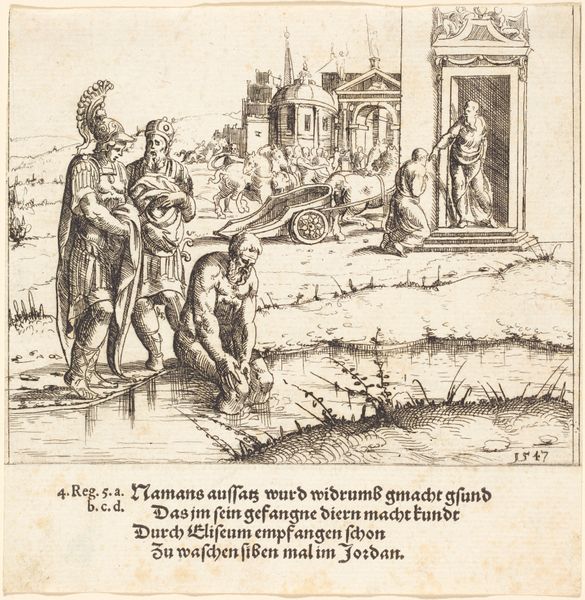
Conviction and punishment supporters of Amaury de Chartres 1460
0:00
0:00
jeanfouquet
Bibliothèque nationale de France (BnF), Paris, France
tempera, painting
#
medieval
#
narrative-art
#
tempera
#
painting
#
figuration
#
history-painting
#
international-gothic
#
mixed media
#
miniature
Copyright: Public domain
Editor: Here we have “Conviction and Punishment of Supporters of Amaury de Chartres” painted around 1460 by Jean Fouquet. It's a tempera on vellum miniature from the National Library of France. It depicts a very somber scene with figures being burned at the stake. What can you tell me about this artwork? Curator: This miniature serves as a powerful document reflecting the socio-political dynamics and anxieties of the late Middle Ages. Consider the role of the Church at that time. What means did it employ to maintain ideological control? Editor: I guess burning people would be a pretty extreme one. I hadn't really thought about how public these events were. The figures seem so deliberately posed and arranged in the miniature, making the message feel intentional. Curator: Precisely. Fouquet, though working under royal patronage, subtly critiques institutional power through the detached and almost theatrical representation of the event. The architecture in the background is very prominent too, suggesting that the urban setting itself played a key role. What might the architecture signify within the narrative of religious prosecution? Editor: Maybe that this happened with civic approval, that the city sanctioned this violence? It really brings the social impact into focus. I’d only really been considering the religious aspects. Curator: Exactly! This isn't simply religious fervor, but a performance enacted with civic complicity. Reflecting on this piece, it reminds us how crucial it is to investigate both overt narratives and underlying socio-political motivations present in artwork. Editor: Yeah, I never thought about it that way. It really brings a different perspective. Curator: It highlights the public role of art in both documenting and subtly contesting prevailing ideologies, encouraging a dialogue on power and its representation.
Comments
No comments
Be the first to comment and join the conversation on the ultimate creative platform.
